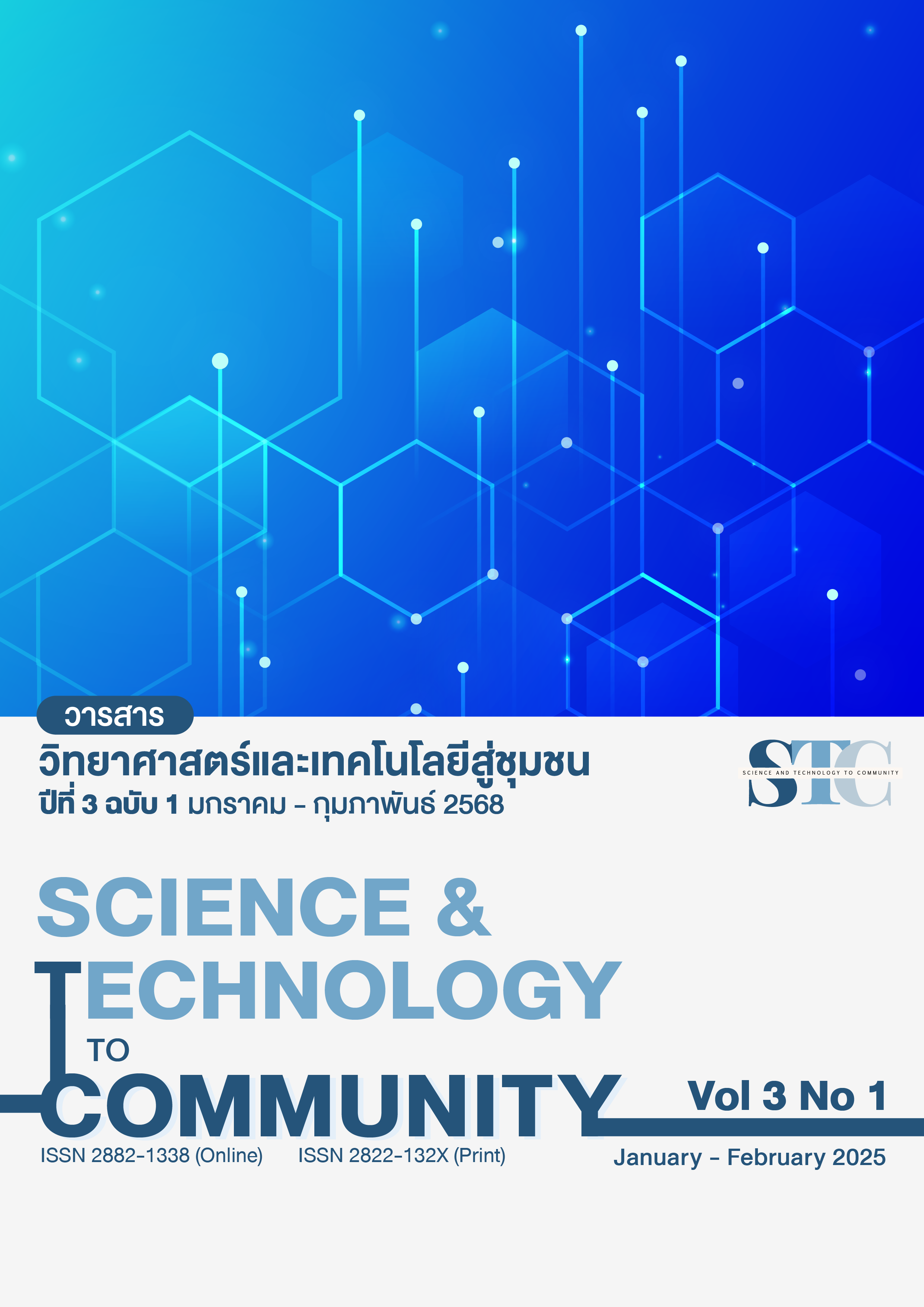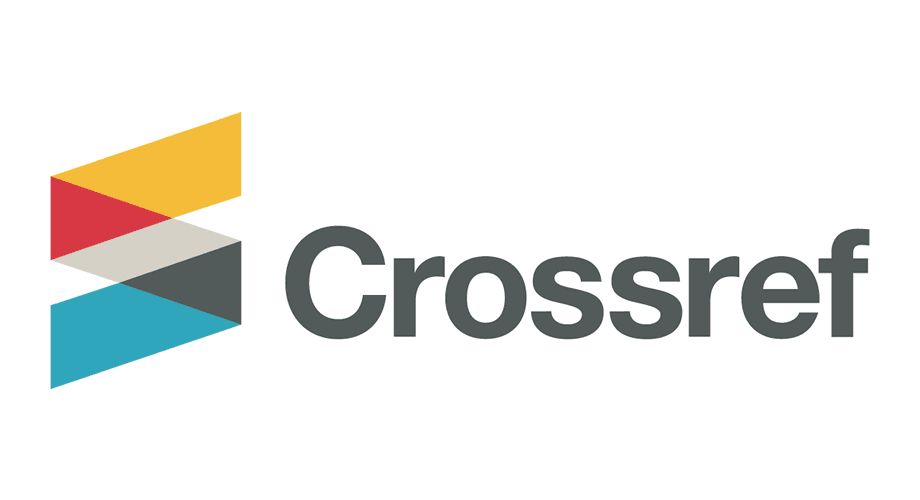Intercropping for forage crops and Herbs Production
DOI:
https://doi.org/10.57260/stc.2025.919Keywords:
Turmeric, Krachai-dam, Napier grass pakchong 1, Flavonoid, CurcuminAbstract
The research aimed to study the optimal planting distance for herbs and the stem planting of Napier grass in intercropping, analyzing growth, yield, active constituents of herbs, and the nutritional components of animal feed plants. The results indicated that the optimal planting distance was 100 cm for turmeric and Krachai-Dam, with a 90-degree stem planting method yielding the best fresh weights for both herbs (P > 0.05). The curcumin content in turmeric varied significantly and was influenced solely by the planting distance. In contrast, the flavonoid content in black Krachai-Dam showed significant variation, affected by both planting distance and stem planting method. The growth of the Napier grass Pakchong 1non significantly. However, nutritional components such as moisture, ash, protein and fiber exhibited significant differences, with protein and fiber also influenced by various factors. Additionally, the planting distance affected the shade of Napier grass, leading to differences in the growth and yield of the herbs.
Downloads
References
จุฬาพร ศรีหนา. (2567). การใช้พรีไบโอติกส์ โพรไบโอติกส์และสมุนไพรในอาหารสัตว์เพื่อส่งเสริมสุขภาพทดแทนการใช้ยาปฏิชีวนะในการเลี้ยงสัตว์. กลุ่มควบคุมอาหารและยาสัตว์. สำนักพัฒนาระบบและรับรองมาตรฐานสินค้าปศุสัตว์ กรมปศุสัตว์ กระทรวงเกษตรและสหกรณ์.
ชญานุช ตรีพันธ์, สุมาลี ศรีแก้ว, ศุภลักษณ์ อริยภูชัย และ สุภาภรณ์ สาชาติ. (2558.) อิทธิพลความเข้มแสงที่มีต่อการเจริญเติบโต ผลผลิต และคุณภาพของดีปลี. สืบค้นจาก https://www.doa.go.th/hort/wp-content/uploads/2020/10/การพลางแสงดีปลี.pdf
นพ ตัณมุขยกุล, จักรินทร์ ม่วงปั้น, ทรงยศ โชติชุติมา, สายัณห์ ทัดศรี และ เอ็จ สโรบล. (2562). อิทธิพลของการจัดการท่อนพันธุ์เนเปียร์ต่อการงอกของท่อนพันธุ์และผลผลิตของหญ้าเนเปียร์พันธุ์ปากช่อง 1 เพื่อใช้เป็นอาหารสัตว์. Thai Journal of Science and Technology, 9(3), 324–332. สืบค้นจาก https://li01.tci-thaijo.org/index.php/tjst/article/view/242191
นาตยา มนตรี, ทิวากร เกื้อสกุล, อัญจนา จันทร์ปะทิว และ พีรชัย กุลชัย. (2564). การปลูกผักและสมุนไพรเป็นพืชร่วมในแปลงสัก. Khon Kaen Agriculture Journal, 49(Supp 1), 1050-1054. สืบค้นจาก https://shorturl.at/cIUtU
เบ็ญจพร กุลนิตย์ และ ธนภร สิริตระกูลศักดิ์. (2566) ผลของปุ๋ยคอกและไนโตรเจนต่อการเจริญเติบโตและผลผลิตของหญ้าเนเปียร์. Khon Kaen Agriculture Journal, 51(Supp 1), 489-495. สืบค้นจาก https://shorturl.at/Ibffn
ปภากร สุทธิภาศิลป์ และ เทิดศักดิ์ โทณลักษณ์. (2564). ผลของปุ๋ยคอกต่อการเจริญเติบโตและปริมาณสารสารฟลาโวนอยด์ในกระชายดำ. วารสารวิทยาศาสตร์และเทคโนโลยีมหาวิทยาลัยราชภัฏอุดรธานี, 9(3), 113-124. สืบค้นจาก https://ph01.tci-thaijo.org/index.php/scudru/article/view/244303
พงษ์ศักดิ์ พลเสนา และ ยุทธนา บรรจง. (2550). อิทธิพลของความเข้มแสงต่อผลผลิตว่านสาวหลง. ในการประชุมวิชาการของมหาวิทยาลัยเกษตรศาสตร์ครั้งที่ 45 (สาขาพืช) มหาวิทยาลัยเกษตรศาสตร์. หน้า 609-615.
พรรณพิมล สุริยะพรหมชัย, สุทธินี เจริญคิด, สุภาพ มนุษย์สม, เสรี ทรงศักดิ์ และ มัลลิกา แสงเพชร. (2550). ผลของการพรางแสงที่มีต่อการเจริญเติบโตและคุณภาพของกระชายดำ. สถาบันวิจัยพืชสวนกรมวิชาการเกษตร .
วาริน สุทนต์. (2562). ผลของการพรางแสงต่อการเจริญเติบโต ผลผลิตและปริมาณสารเคอร์คูมินในไพล.วารสารมหาวิทยาลัยศรีนครินทรวิโรฒ (สาขาวิทยาศาสตร์และเทคโนโลยี), 11(22), 146-156. สืบค้นจาก https://ejournals.swu.ac.th/index.php/SWUJournal/article/view/12123
สมยศ เดชภิรัตนมงคล, ธวัชชัย อุบลเกิด, สมมารถ อยู่สุขยิ่งสถาพร และ นิตยา ผกามาศ. (2552). ผลของปุ๋ยมูลสัตว์ที่มีต่อการเจริญเติบโตและผลผลิตของขมิ้นชัน. สืบค้นจาก https://kukrdb.lib.ku.ac.th/proceedings/kucon/search_detail/result/11323
AOAC. (1990). Official Methods of Analysis. (16th ed.). Association of Official Analytical Chemists. Arlington, VA.
Baskar, R., Shrisakthi, S., Sathyapriya, B., Sathyapriya, R., Nithya, R., & Poongodi, P. (2011). Antioxidants potential of peel extracts of banana varieties (Musa sapientum). Food and Nutrition Sciences, 2, 1128-1133. Retrived from https://www.scribd.com/document/400406242/554-559-V9N12PT
Beck, R. (1999). Soil Analysis Handbook of Reference Methods. Soil and Plant Analysis Council, Inc. CRC Press, USA. p. 247.
Bray, R. H., & Kurtz, L. T. (1945). Determination of total organic and available form of phosphorous in soil. Soil Science, 59(1) 39-45. Retrived from http://dx.doi.org/10.1097/00010694-194501000-00006
Bremner, J. M., & Mulvaney, C. S. (1982). “Nitrogen-total,” Methods of Soil Analysis. American Society of Agronomy Inc., Publisher Madison, Wisconsin. p. 595-624.
Geethanjali, A., Lalitha, P., & Jannathul, F. M. (2016). Analysis of Curcumin Content of Turmeric Samples from Various States of India. International Journal of Pharma And Chemical Research, 2(1), 55-62. Retrived from http://www.ijpacr.com/files/19-01-16/114619012016.pdf
National Soil Survey Center. (1996). Soil Survey Laboratory Methods Manual. Soil Survey Invest Rept. No. 42, Version 3.0. U.S. Dept. of Agr., U.S. Government Printing Office, Washington, DC.
Nelson, D. W., & Sommers, L. E. (1996). Total carbon, organic carbon and organic matter. Method of Soil Analysis. Part 3. Chemical Methods. No. 5. Amer. Soc. of Agron. Inc., Madison, Wisconsin. P.961-1010.
Ordonez, A. A. L., Gomez, J. D., Vattuone, M. A., &, Isla, M. I. (2006). Antioxidant activities of Sechium edule (Jacq.) Swart extracts Food Chem, 97(3), 452-458. Retrived from https://www.sciencedirect.com/science/article/abs/pii/S0308814605003997
Paez, A., & Lopez, V. P. J. C. (2000). Growth and physiological responses of tomato plants cv. Rio Grande during May to July season. Effect of shading. Revista de la Facultad de Agronomía.
Pratt, P. F. (1965). Potassium. Methods of Soil Analysis. Part 2. Chemical and Microbiological Properties. Agron. No. 9. Amer. Soc. of Agron. Inc., Madison, Wisconsin. p.1022-1030.
Satoro, K., & Hiroyuki, T., Abhichartbut, R., Katsuya, O., Hitoshi, O., Sumiko, S., & Norihiko, T. (2014). Abscisic acid metabolism and anthocyanin synthesis in grape skin are affected by light emitting diode (LED) irradiation at night. Journal of Plant Physiology, 171(10), 823-829. Retrived from https://www.sciencedirect.com/science/article/abs/pii/S0176161714000170
Shahak, Y. (2000). Colored shade nets a new agro-technology current research in ornamental. Retrived from http:// infoagro.net/Shared/docs/a2/colored shadenets.pdf
Stancato, G. C., Mazzafera, P., & Buckeridge, M. S. (2010). Effects of Light Stress on the Growth of the Epiphytic Orchid Cattleya Forbesii Lindl, X Laelia Tenebrosa Rolfe. Retrieved from http://www. scielo.br/scielo.php?script=sci_ arttext&pid.htm.
Silvertown, J. W. (1982). Introduction to Plant Population Ecology. Essex: Longman House.
Vandermeer, J. (1989). The Ecology of Intercropping. Cambridge: Cambridge University Press.
Downloads
Published
How to Cite
Issue
Section
License
Copyright (c) 2024 Science and Technology to Community

This work is licensed under a Creative Commons Attribution-NonCommercial-NoDerivatives 4.0 International License.
1. Articles, information, content, images, etc. that are published in "Science and Technology for Community Journal" is the copyright of science and Technology for Community Journal. Chiang Mai Rajabhat University. If any person or organization wants to distribute all or any part of it or do any action Must have written permission from the science and Technology for Community Journal, Chiang Mai Rajabhat University.
2. Content of articles appearing in the journal is the responsibility of the author of the article. The journal editor is not required to agree or take any responsibility.













